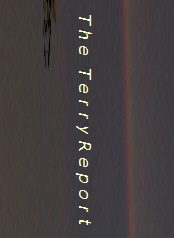|
|
|
The truth is something we shall seldom know, but never stop seeking. |
|
|
||||||||||||||||||||||||||||||||||||||||||||||||||||||||||||||||||||||||||||||||||||||||||||||||||||||||||||||||||||||||||||||||||||||||||||||||||||||||||||||||||||||||||||||||||||||||||||||||||||||||||||||||||||||||||||||||||||||||||||||||||||||||||||||||||||||||||||||||||||||||||||||||||||||||||||||||||
|
Photography from Guatemala, Maryland, Italy and elsewhere by Doug Terry |
||||||||||||
|
LINKS TO ALL TERRYREPORT STORIES ON AIRPORT SCANNERS located here. Includes links to the WashPost series on the same subject. |
||||||||||||
|
W WOULD YOU like to support The TerryReport? Over the years, the TerryReport has posted close to 2,000 pages of news, analysis, commentary and information. Help us continue! |
||||||||||||
|
VISIT DC? AN ESSAY ON WHY EVERY AMERICAN CITIZEN SHOULD VISIT |
||||||||||||
|
What in the world is this? Now, after being told a thousand times that al Queda and the war on terrorism is the struggle of our century, it looks like the organization is 3/4s or more dead and the rest is dying. DETAILS HERE. |
||||||||||||
 |
||||||||||||
|
One of the best, most lucid and well written American history books I have ever read. This is not merely history, it is the story of much of the creation of the American nation as it entered into a long, horrid conflict with the native peoples. Reading this, you will come to understand the battles between Indians and whites with more clarity than ever before. Personalities come alive and vivid writing carries you through. Out in quality paperback now. |
||||||||||||
 |
||||||||||||
















































































































































































































































